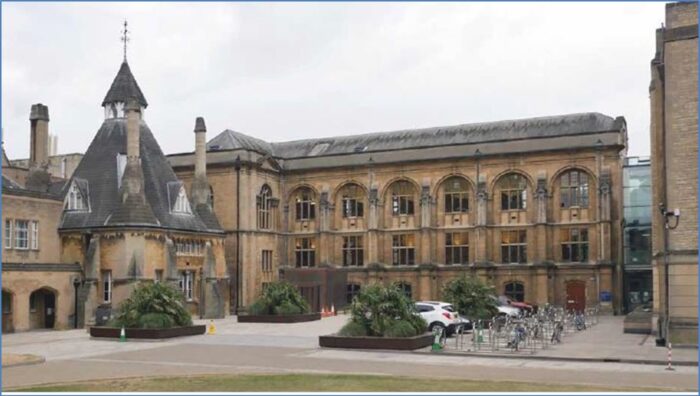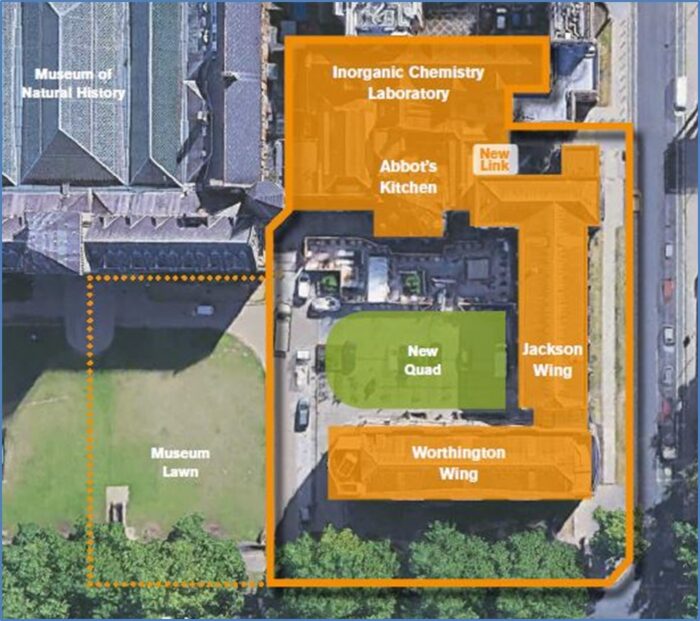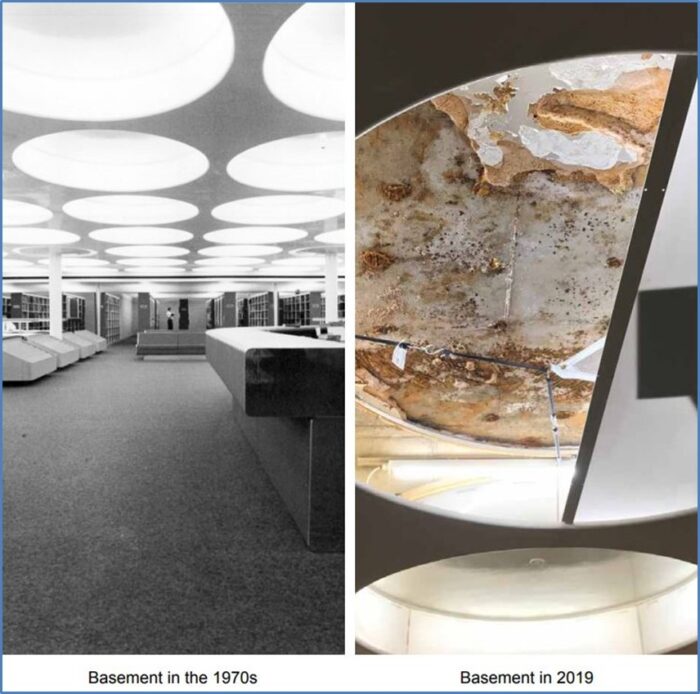Asbestech Limited, Unit 3, The IO Centre, Hearle Way, Hatfield, Herts AL10 9EW
T 0845 680 0055 | F: 0845 680 0066 | E: solutions@asbestech.com | Registered No. 3478062
Ratcliffe Science Library, Oxford University
Outline
Radcliffe Science Library (RSL) is Oxford University’s main teaching and research science library. The building includes the Jackson Wing, built in 1901, and the Worthington Wing, built in 1934, as well as a large basement beneath the Library’s courtyard and the front lawn of the Oxford University Museum of Natural History. In addition to the main RSL buildings, the redevelopment includes the adjoining buildings (the western wing of the Inorganic Chemistry Lab and Abbot’s Kitchen) and their connecting spaces with the work spanning two upper floors, ground level and two basement levels in total. The listed building is under Heritage status meaning that all planned changes were subject to careful scrutiny to ensure that the work did not alter the original character of the building. The goal of the refurbishment programme for the building is to improve the usability, comfort, quality and layout of the library for stakeholders.
Working under the Principal Contractor, Morgan Sindall, Asbestech played a significant role in preparing the building so that other contractors could complete their work safely without exposure to respirable asbestos fibres. Our project team was personally led by our Technical Director, Gary McComb, who worked closely with Morgan Sindall and with Environmental Essentials who were the appointed asbestos analytical provider to ensure that each element of work was properly understood, carefully planned, and where appropriate had approval from English Heritage prior to work commencing. Due to the complexity of the overall project and the myriad of obstacles to be overcome in delivering it the individual programme elements were fluid to keep the milestone events on track. Gary issued detailed works programmes to stakeholders whenever individual elements changed which during some periods meant an updated programme being issued daily.
Work Elements
Our works for this project were varied and saw us working across all five levels and across the whole demise shown in the diagram above. Much of our work was completed under Fully Controlled Conditions in negative-pressure asbestos containment enclosures and subject to forensic four-stage clearance procedures prior to Environmental Essentials issuing a certificate of reoccupation for each area.
Our work across the site included the following elements amongst other tasks:
• Removal of sprayed flock asbestos
• Removal of Asbestos Insulation Board
• Removal of pipe insulation
• Removal of gaskets and mastic
• Removal of rope gaskets to skylights
• Controlled hole coring through contaminated walls and floors
• Removal of asbestos-contaminated screed
• Removal of asbestos-bearing lime plaster to walls, ceilings, and other surfaces
• Removal of asbestos-bearing mortar
• Liaison with English Heritage and Oxford Council Heritage Dept for planning and approvals
• Working with specialist heritage contractors to deconstruct and remove historically important bookcases
It was noted by the project and broader teams that the existing bookcases and wall panelling are important to the history of the RSL and for the future of Parks College as they contribute to the character and significance of the reading rooms. This challenging brief saw Asbestech working closely with specialist heritage timberwork contractors to devise plans to carefully deconstruct, remove and clean the bookcase structures from the area under semi-controlled conditions. These plans were put together in detail prior to gaining approval from English Heritage and Oxford Council’s Heritage Team. Once approval had been granted, the heritage timberwork specialists undertook additional training to enable them to carry out their work safely under our constant supervision.
Outcome
Asbestech were pleased to deliver a safe working space to Morgan Sindall so that their refurbishment contractors could enter the areas and carry out their work safely. The project progressed at a fast pace with priorities shifting dependent on the backdrop of the complications of the full refurbishment project. Gary McComb, Asbestech’s Technical Director who personally oversaw the delivery of the project, said, “One of the things that fascinate me in our industry is the opportunity to interact with heritage buildings and use my experience to help clients achieve their goals whilst still respecting the legacy and spirit of the remarkable buildings and architecture. This has been an absorbing project that has provided many unique challenges since the start, but with the help of my great team I am really pleased with the contribution we were able to make.”
Shane Wright, Asbestech’s Major Projects Supervisor who worked with Gary to deliver this unique project added, “This has been one of the largest and longest-running sites that I have worked on, and I’ve enjoyed contributing to the project under Gary’s guidance. I’ve found it rewarding and was happy to help the wider team overcome both construction and heritage-based issues so that we could ready the buildings for the next phase of refurbishment.”
Dale Harris, Morgan Sindall’s Project Manager stated, “I have worked in the construction industry for over 25 years and in that time I have worked on many prestigious refurbishment projects across the UK. Asbestech is the best asbestos removal company I have ever seen. The attention to detail from Gary and his team is second to none. I have already engaged the team on another project and in the future, I won’t use anyone else.”
It’s worth noting that Asbestech were awarded Best Health and Safety and Environmental Performance in the Morgan Sindall Construction Awards during the project.
- CLIENT Oxford University
- CATEGORY Education
- TAGS



